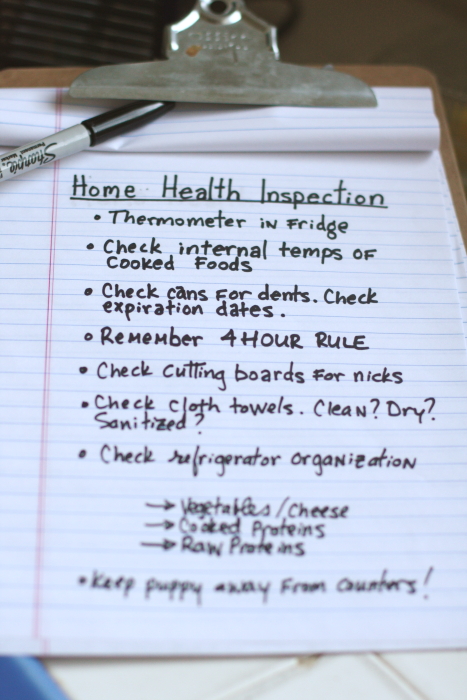Food lovers enjoy cooking. But how knowledgeable are we when it comes to safe food handling and cooking techniques?
I always put my customers’ health and satisfaction first at every restaurant I work at. I’m grateful for my ServSafe manager certification training and educate my staff on good health safety and proper food handling protocols. My kitchens do multiple health inspections a day in order to maintain and uphold their “A” letter grades. My staff know me as a stickler for finer points and am always pushing them to do better.
But the truth is, I wasn’t always food safety knowledgeable. Back in the early days of my restaurant work, I was what I call “a walking health code violation.”
Small Town Violations
More than twenty years ago I got my start at a fried seafood joint in a small town in Massachusetts. It was the Bon Jovi 80’s and I was a naive, teenage kitchen worker. I microwaved chowders, mixed thousands of milkshakes and frappes on a stainless steel mixer, and grilled the occasional meat patty at a fried seafood shack without ever being educated on any aspect of food safety. The husband and wife team who owned the fried seafood stand, chain-smoked throughout the shift as they cooked and plated leaning towers of fried seafood.
The owners didn’t mind our big 80‘s hair and rock and roll radio we danced to as we worked over the fried clams. They almost certainly didn’t concern themselves with teaching any of their staff how to maintain a spotless kitchen. I washed my hands once a shift and used the same (un-sanitized) rag to clean counters and my equipment for the entire shift. We used sky blue Windex to wipe down the wood counters and stainless cooking equipment. Even when the kitchen reached temperatures above 110 degrees on hot summer days, the thick cream and milk mixture the raw seafood was dipped into was never refrigerated (once we pulled it from the walk-in). I don’t recall ever seeing a thermometer used to check holding temperatures. That’s a culinary memory I’d rather forget.
I discovered much about the food industry back then, but none of what I learned had anything to do with food safety.
Little City Oversights
Later, in the mid 90’s when I began tending bar at a family eatery outside of Boston, I learned very little about safe food handling standards. I was told to taste juices for spoilage and put out vinegar soaked sponges to catch fruit flies, but that was about it. The chef was constantly hung over and he had other things to worry about. The kitchen’s cleanliness reflected his work ethic. We served frozen foods deep-fried in oil that I never saw changed and monster nacho plates that were heated up in a dirty microwave. Vegetarian chili, creamy soups, and sauces were made from scratch and reused until they started to smell bad.
I was food poisoned more than once and frequently got sick.
Upholding an A
It wasn’t until I moved to Los Angeles in the late 90‘s that I was introduced to a more stringent health code with letter grades. Once I started working in LA restaurants and watched my first thorough health inspection, I quickly learned about cross-contamination, internal temperatures for cooked proteins (165º), date labeling, proper cooling techniques, and the danger of ice scoops in ice machines. I became aware of the importance of frequent hand washing, sanitized rags, proper food storage (cold foods must be held at 40º or less), cooling techniques for hot foods, and proper internal temperatures of refrigerators (40 or less).
The more I learned at work, the more clean and safe my home kitchen became. I realized in time how hazardous my own cooking techniques were. I learned to never cut raw meat on the same cutting surface as vegetables. I stopped using the dish sponge to clean the counter top. I began looking at expiration dates on dry and frozen foods. I found that using a thermometer in my oven and to test the internal temperatures of the foods I cooked made an immediate impact on the quality (and safety) of my meals. Continue reading “Service 101: Home Health Inspection”

